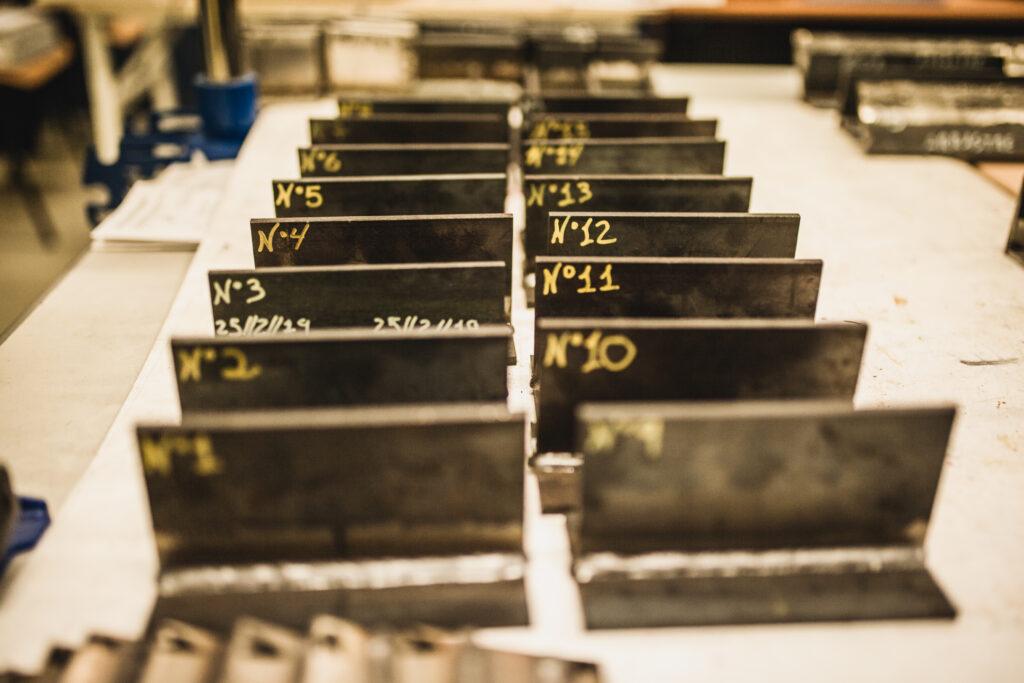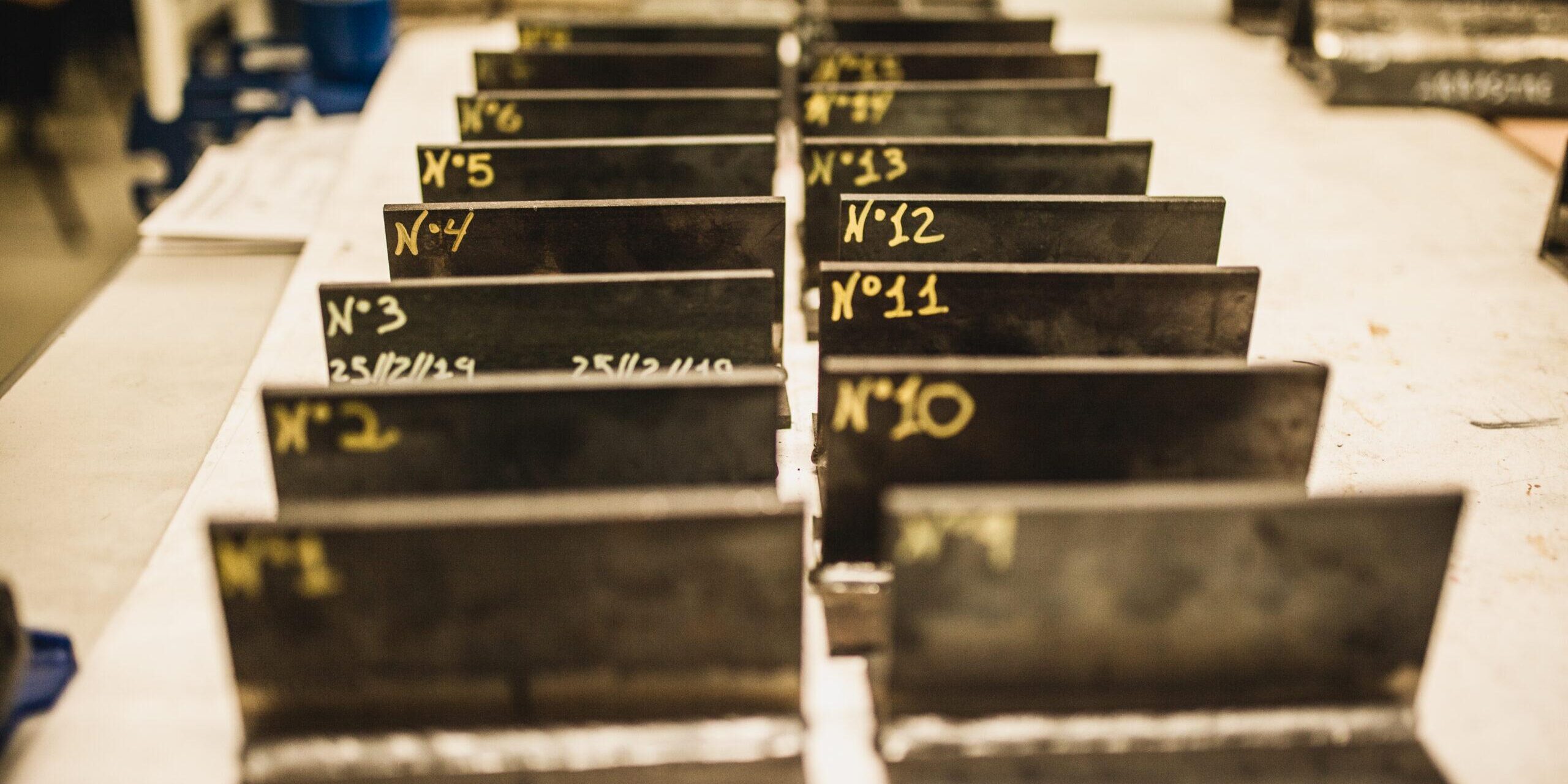Welding is a great skill that anyone can learn, and as is the case for most learning experiences, some lessons are best learned by making mistakes. Welding, however, is an exception. Mistakes can be costly and dangerous, so it’s important to be fully aware of what they are, how to avoid them, and how you can keep safe.
Through inspection and quality control, different types of defects can be detected, sometimes even intuiting the presence of some under the surface.
Welding needs to be reviewed before, during and after the joining process. In this way the full range of errors that could occur during the welding process is overlooked.
Let’s get things underway and explore some of the most common welding mistakes to avoid…
Poor Preparation for a Welding Job
Quality assurance is key when performing a weld, not only to keep your employer happy but to ensure that the weld holds up under pressure and will not put others at risk.
Here’s what you need to do:
- Clean the base material to remove dirt, dust, oil, grease, and other contaminants from getting mixed up in the weld pool. Abrasive blasting might be needed to remove rust.
- Use an angle grinder when required to prepare large, flat areas of metal (perfect for TIG or MIG, but not good for thin metal sheets) – sandpaper is a cheaper and more time-consuming alternative.
- Analyze the connection for loose or damaged cables (replace or tighten if required) to ensure that voltage and heat changes will not occur.
- Consider the weld joint itself and whether the gaps might cause burn-through or distortion problems, fixing or clamping where required.
- Make sure to follow the weld-parameter settings from the welding procedure specification. Read twice to make sure you don’t miss anything
Low-Cost Filler Materials
Saving a buck here or there might seem to ingratiate you with your employer, but the reality is that being led into the temptation of buying poor-quality filler metals will create more problems and costs further down the line. These cheap filler metals result in weld defects, excessive spatter, and poor wire feeding, all of which will come back to bite you.
Instead of considering the money saved on cheap materials, consider the additional cost of repair labour and materials for fixing a bad weld. Invest in some anti-spatter spray to help do things right the first time.
Poor or Old Equipment
Many welders choose to repurpose old equipment, power sources, generators, wire feeders, and more, resulting in technical issues that cost a lot of time. Troubleshooting and repairs lead to downtime problems that can be easily avoided by upgrading to newer technologies.
Whilst this might seem to be expensive advice, the long-term savings are proven by:
- Reduced prep time for a weld
- Better controls that allow for more intuitive operation
- Higher wire-feed speeds
- Improved fusion on welds
There’s a fairly quick ROI on most equipment upgrades, however, you should always perform a cost-savings analysis to decide whether you can afford the new equipment.
Overlooking Maintenance
Ignorance is bliss, right? Well, not when your tools and equipment are breaking down, falling apart, and causing you countless issues, issues that lead to growing costs and downtime.
Preventative maintenance is much like doing exercise and eating healthily, you don’t see the results immediately but they prolong your life and keep costs low by avoiding unscheduled downtime.
Regular care goes a long way and involves visual and physical inspections of your welding gun, consumables, power source, wire-feeding system, and personal protective gear. Preventative maintenance can be performed quickly on a daily basis during pauses, weekly on a more thorough level, or with the help of a professional.
Ignoring Health & Safety Precautions
Being careless will not win you any friends in this industry. Those who overlook H&S requirements are typically the first to get hurt. Almost all accidents are preventable. For example:
- Arc flash: those who fail to protect their eyes with the essential gear will experience exposure to bright lights and UV radiation, both of which can do serious damage to your eyes on both a short and long-term basis. Be sure to wear your helmet, visor, goggles, and gloves, even if just doing a one-second weld.
- Skin burns: fire is hot, period. In fact, it’s so hot that it can literally melt one metal and fuse it into another! Imagine what it can do to your skin if you don’t take the necessary cautions to protect yourself. Splatter, slag, and the general heat of the torch require welders to wear aprons, helmets, gloves, and long-sleeved shirts
- Welding fumes: Even though fire takes most of the credit, welding fumes and smoke can be really dangerous too. Make sure the welding workshop has sufficient ventilation and good fume and dust extraction not only during welding, but also during cutting and grinding operations.
- Electrocution: less common in nature, but no less life-threatening, electricity poses a great danger to those who are not prepared. Welding units and their operating panels should not be played with, they are not toys. It is usually faulty equipment to blame for electrocution events, but it can also happen in wet working conditions. Always secure earthing and use high quality insulating materials.
For more information, take a look at our welding safety guide.
Lacking Training & Practice
Experience is a degree in almost every field, but when it comes to welding, its importance is even bigger. Your first welding experience may look scary, and specialized training requires higher consumables and time costs. This is why new technologies and solutions are bringing the next step in welding training, you can see how Soldamatic applies Augmented Reality to develop the next generation of welders here.
There’s also a lot of value in retraining. As technologies, techniques, and equipment improve and innovate, some welders might accidentally get left behind. For this reason, continuing professional development (CPD) is vital. It is a combined responsibility of welders and their employers to invest money and time into their skill sets. For employers, having a fully-trained workforce will increase efficiency and hopefully if they choose to invest in their welders, it will improve the bond of loyalty.
Welding safety best practices
As we have discussed, there are many mistakes that can occur around the welding process, so how can we try to reduce them? These are some best practices from our team of experienced welders to help you:

Before welding, make sure that:
– The base material and product type corresponds to that specified in the fabrication drawing and the welding procedure specification (pWPS or WPS).
– The shape and dimensions of the edge preparation meet the requirements of the welding procedure specification.
– The fusion faces and adjacent surfaces are clean of oxides and paints, and that any surface treatment has been carried out in accordance with the application standard or product standard.
– The parts to be joined by welding have been properly fastened together in accordance with the drawings or fabrication instructions.
– The welding points which hold the assembly together and which are later to be remelted during the final welding, are free of defects such as cracks, porosities, inclusions, etc.
During welding, make sure that:
– Each pass or layer of weld metal is cleaned before it is covered by the next, paying particular attention to the joints between the weld metal and the fusion face.
– There are no visible imperfections such as cracks or cavities. If imperfections are observed, they should be reported so that corrective action can be taken before more weld metal is deposited.
– The transition between passes and between the welds and the base metal is shaped in such a way that satisfactory fusion can be achieved during welding when the next pass is welded.
– The depth and shape of the pass is in accordance with the WPS or pWPS, in order to ensure complete removal of weld metal as specified.
– After any necessary repairs, the weld is in accordance with the original requirements of the welding procedure specification.
After welding, make sure that:
– In the case of single-sided butt welded joints, the penetration, root concavity and any chamfer deflection or shrinkage are within the limits specified for the acceptance criteria.
– Any nicks are within the requirements set for the acceptance criteria.
– Any imperfections, such as cracks or porosity, detected on the surface and ZAT meet the established acceptance criteria.
– Any temporary tooling welded to the final assembly to facilitate fabrication or assembly, when removed, must not leave any defects in the structure.
– Any priming marks are within the limits of the acceptance criteria.
The Verdict
We all make mistakes, it’s life. However, some make more and some make fewer. Some people are cautious and prepared, others are careless and try to wing it. When the question is one of welding, the answer is to be more cautious and prepared in order to perform excellent welds, avoid damage to yourself, the metal, and the environment around you, and help you mature in your role.
It’s important that welders look at quality over cost, and do not consider taking cheap shortcuts to save a little here and there. Patience, quality, and caution will help you rise to the top as a welder.











